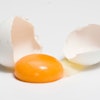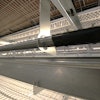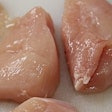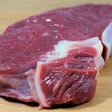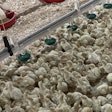Rising corn prices cast a major shadow over both the USA broiler and turkey industries as 2006 drew to a close, but the chicken and turkey industries were moving in different directions. Broiler eggs sets were declining at year’s end, while poult placements were on the rise. Executives from seven broiler and seven turkey companies shared their thoughts on what 2007 might hold for their industries by responding to a WATT PoultryUSA survey. The two industries faced markedly different spot-market wholesale price situations as 2006 came to a close, but they share many of the same challenges for 2007, as they face a year that promises high feed and energy costs and a number of other opportunities.
Chicken prices
Based on USDA data, year-to-date through September, total chicken slaughter pounds in 2006 in the USA were even with 2005, but prices for breast meat and leg quarters were still low. Broiler company executives were asked if slaughter volume will have to drop below 2005 levels in order for commodity meat prices to recover. There was a consensus; slaughter volume needs to drop for prices to recover. Mike Pastore, vice president of sales and marketing, Park Farms, said, “Yes, slaughter volume must be reduced; this is no longer a domestic situation only – it is global.” Mike Helgeson, CEO, Gold’n Plump, agreed, saying, “The issue is that large bird deboners have increased production 5.3 percent year-to-date in volume.” O.B. Goolsby, Jr., CEO, Pilgrim’s Pride Corporation, said, “I believe that slaughter volume will have to be at least 2 percent less than a year ago.” W.M. Gentry, Jr., president, Gentry’s Poultry, said, “Yes, the industry needs to continue with less placements.”
According to USDA data, year-to-date chick placements through November 4, 2006, were 1 percent lower than in 2005. This represents the largest drop in chick placements in at least 16 years, but chicken meat prices remained relatively low. Broiler executives were asked what steps the industry needs to take to attain profitability in 2007. Bob Cryar, senior vice president of sales and processing, Cagle’s, Inc., said, “The industry needs to cut back the pounds of chicken produced. People eat pounds not head.” Tom Hensley, executive vice president and CFO, Fieldale Farms Corporation, said, “While placements are lower, weight and livability are higher, thus more meat is available. Meat production must be lower for us to attain profitability.”
Turkey prices
Based on USDA data, young turkey slaughter volume in pounds was up by 3.2 percent in the first eight months of 2006 in the USA over the same period in 2005, but prices for whole birds and meat were still strong. Turkey industry executives were asked whether per capita turkey consumption in the USA had increased for the first time in a decade. Ted Seger, president, Farbest Foods, Inc., said, “Despite slaughter volume being up 3.2 percent, the turkey industry started the year with record low frozen inventories. Low inventories contributed to strong prices, even with more production. However, I do believe that we will see per capita consumption increase for 2006.” Ken Rutledge, president and CEO, Dakota Provisions, agreed that per capita consumption increased. “Yes, companies are serving higher quality product, with less water added, thus more turkey is being consumed,” Rutledge said. Other survey respondents were not as certain about an increase in per capita consumption. Gary Cooper, COO of Cooper Farms, said, “It’s difficult to know for sure if our per capita turkey consumption has increased this year, as one can read reports on someone’s belief on both sides of this question. For sure, the main reason that market prices have stayed high was nearly (solely in my opinion) due to our cold storage levels being at ten-year historical lows. Plus, take into account that the U.S. population is growing at about 2 percent per year, and these two things are basic economics 101 – supply and demand.”
Poults placements in the eight-month period, October 2005 to May 2006, increased by 5.2 percent over the same period a year earlier, but when these birds were slaughtered, January 2006 to September 2006, the head slaughtered only increased by 2.3 percent. So, livability dropped by almost 3 percent in this time frame. Executives were asked what the primary causes of the reduced livability were. Several executives cited higher than normal summer heat losses, but they cited other reasons as well.
John Prestage, president, Prestage Farms, said, “We lost a few toms to the excessive heat in July; higher starting mortality occurred in our operations in both sexes in 2006.” Yubert Envia, general manager of turkey operations, Foster Farms, said, “Even prior to the heat periods, the industry was experiencing higher mortality rates, especially in the heavy tom flocks. Several things can be contributing factors—banning of antibiotics, weight and poor poult starts.” Mike Briggs, president, Willowbrook Foods, said, “A combination of genetic pressure from the primary breeders coupled with feed rations intent on maximizing growth. Throw in tight houses during the winter caused by record propane prices after Katrina along with a nasty heat spell this summer, and I think that gives us the equation.” In addition to the already mentioned health issues, executives cited E. coli issues and cellulitis, an emerging disease in turkeys, as causes for the increased mortality experienced by the industry in 2006.
Grain costs
Corn prices jumped last fall, despite the third-largest U.S. corn harvest ever. Increasing use of corn in ethanol production has been blamed by many analysts for the run-up in corn prices. Broiler and turkey company executives were asked what affect grain prices will have on industry profitability in 2007. Broiler company executives seem to be in agreement that chick placements need to decline in order for the industry to pass on higher grain costs to customers. Fieldale’s Hensley said, “The price of corn will add four cents per dressed pound to cost in 2007. Again, we must have less chicken meat available in order to be profitable.” Goolsby said, “We must pass this cost through to customers. We must reduce supply to make that happen. Export disruptions would be a huge negative.” Pastore said, “This will be a huge challenge. We need to react quickly. With poor profit performance in 2006 and increasing feed costs for 2007, we as an industry need to find the ‘sweet spot’ to balance profits and production.”
The turkey industry is in the midst of an expansion phase in response to the relatively high turkey prices of the last few years. Because of this, there is uncertainty about how the industry will respond to higher grain prices. Willardsen said, “Pricing has been high enough that it will likely take some market softening to see a real reduction in placements. That being said, should we reach $4.00 corn, some reason will probably come into play and we would expect placements to decrease.” Envia said, “The higher corn prices will definitely have an impact on placements. How much will depend on how well the processors are able to pass along the higher costs to their customers. With the low supply and high meat prices that we have experienced in the last couple of years, I do not believe there will be an oversupply of turkeys anytime soon.”
Avian influenza
Fortunately, high-path avian influenza (HPAI) did not spread to the U.S. poultry industry in 2006, but outbreaks overseas caused trade interruptions and a drop in foreign demand that hurt profitability in 2006, particularly for the broiler industry. While it is impossible to predict AI outbreaks in 2007, executives were asked if the U.S. poultry industry is as vulnerable economically to outbreaks as it was in 2006.
Pastore said, “I don’t think it’s any different now than it was early in 2006. It may even be worse as more people are aware of the situation. The media was not upfront or honest in their reporting.” Others in the industry believe that another year of preparation has helped the industry. Cooper said, “Yes, the U.S. is vulnerable to AI, but on the other hand the industry has very good biosecurity guidelines and policies as well and we all have upgraded them over the past year.” Briggs said, “If there were to be a case of HPAI, I think we would see a decline in consumption. However, the longer we go without one, and the more prepared industry and government are in the event there is one, I think we can compress the time that consumption is off.”
Some executives believe that educating the public about AI could have a positive impact in case there is an outbreak in the USA. Goolsby said, “I believe that the consumer is better informed about the safety of cooked chicken, but a break in the U.S. would hurt exports.”
Challenges for 2007
Executives were asked what they thought the poultry industry’s biggest challenges would be in 2007. Because of the immediate “oversupply” situation for chicken in the USA, broiler industry executives were keenly focused on the amount of chicken being produced. Cryar said the biggest challenge for 2007 is “survival until the cutbacks (in chick placements) affect supply and price increases to break-even.” Helgeson said, “The industry must pass increased feed costs to consumers in order to survive. The industry must stay AI free and get the USDA to reduce conservation reserve program acreage to allow more corn planting.” In addition to dealing with increased grain prices and relatively low chicken prices, Tom Hensley, Fieldale Farms, said, “Immigration legislation is a concern” for the poultry industry in 2007.
The turkey industry does not face the immediate oversupply situation that the broiler industry does, but there are a number of concerns on the minds of turkey industry executives. One major challenge was articulated by Prestage, who asked, “Can we increase our meat prices to cover our increased production costs for corn and energy?” High grain prices could exacerbate existing poult quality and livability issues according to Willardsen. “Obviously, poult quality and livability are big issues. The other challenge will be corn and soy prices and the impact of alternative fuel manufacturing processes on availability of grain. These challenges may necessitate alternative ingredients and formulations, which could affect bird performance,” he said.
Cooper said that the biggest challenge now and in the future will be “educating our legislators at the state and national level about the agriculture industry about how their decisions can negatively (or positively) impact our industry. The industry should attempt to get them ‘out on the farm’ so they know what they are talking about when it comes to the farm bill and issues like ethanol or CERCLA.” Cooper said that the next challenge for the industry will be “attracting and educating bright young people into our business when there are so many other industries that are more attractive to a young aggressive person.”
